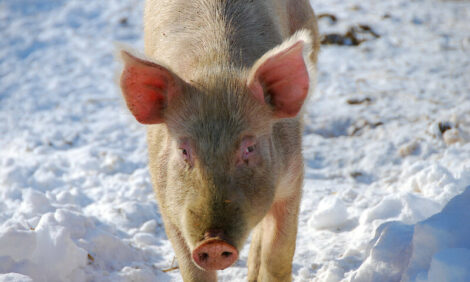



Which stages in pig production are most responsible for emission of antibiotic resistant genes?
New research shows which stages of production contribute most to the emission of antibiotic resistant genes (ARGs) in large-scale swine farms in China.The authors of the paper, Junya Zhang, Tiedong Lu, Yufeng Chai, Qianwen Sui, Peihong Shen, Yuansong Wei, ran the study with the goal of determining which animal type (age and stage of production) contributes the most to the ARG emission into the environment in typical swine farms in China.
The results of the study were published in the journal, Science of The Total Environment, under the title, Which animal type contributes the most to the emission of antibiotic resistance genes in large-scale swine farms in China?
Abstract
Modern swine farms generally contain several animal types and rely extensively on feed additives, including antibiotics and heavy metals, to augment animal growth. Nonetheless, as an important reservoir of antibiotic resistance genes (ARGs) in the environment, the ARGs emission of each animal type from swine farms has not been characterised.
The goal of this study was to determine which animal type contributes the most to the ARGs emission into the environment in typical swine farms of China.
Results showed that chlortetracycline (CTC), Cu and Zn were the typical feed additives, and the concentrations of antibiotics and heavy metals in the feed and swine manure were generally higher in nursery pigs (NP) than other animal types, while the gene copies of ARGs from gestation sows were the most abundant.
Gestating sows (GS) released the most antibiotics, ARGs and mobile genetic elements (MGEs) per head per day compared to other animal types.
A typical swine farm with the feedstock of 10,000 pigs could release about 4.0 ± 1.3 × 1017 gene copies of ARGs per day, and concerning the breeding ratio and manure production coefficient, growing and fattening pigs (GFP) released the most ARGs and antibiotics, whereas gestation sows (GS) released the most of MGEs.
The different distribution of ARGs in different animal types was mainly determined by the discrepancy of microbial community composition reflected by mantel test and partial redundancy analysis (pRDA).
The dominant phylum in swine manure were Firmicutes and Bacteroidetes, but Proteobacteria, Bacteroidetes and Spirochaetae played the dominant role in shaping the ARGs profiles.
Antibiotics and heavy metals could have generated and maintained the ARGs profiles, whereas the proliferation and spread of ARGs could be mainly attributed to microbial community in swine manure.








